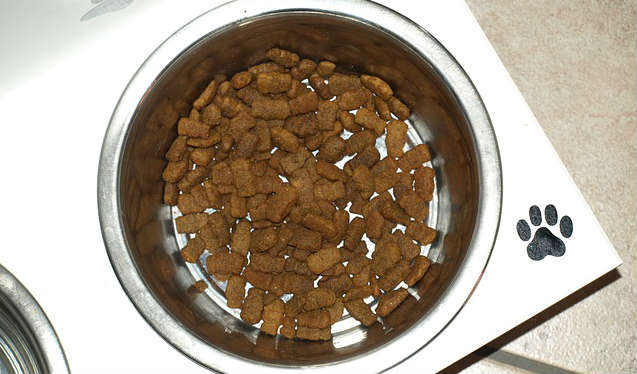What is the best diet to feed a dog?
Original Question: Good afternoon, I would like to offer my Shih Tzu the best food I can, which one would you recommend? - Yeliz
 Jun 21, 2019
Jun 21, 2019
Hi Yeliz,
I recommend feeding a high quality, complete commercial cooked diet. But how do you go about knowing whether the diet you’re thinking of falls into that category? It should have it written on the pack that it is complete and balanced which is a protected term meaning that you could only pop that on if it’s a diet that can be fed by itself and meet all of your dog’s requirements.
How do we know that a diet is complete and balanced? We can get various different ways that diets are tested. They can be tested using the AAFCO feeding trials or by formulating to meet the nutrient profiles, either by formulation or by testing of the finished product. The best way for them to be tested is by feeding trials, then actually testing of the finished product and the worst way that we can say that they’re balanced is by meeting the nutrient profiles or formulated to meet the nutrient profiles. The reason for this is that when we formulate diets and cook, prepare and manufacture them, it might be that there are changes made to the diet in that manufacturing process that mean the finished product is different from the nutrient profiles that went in to form it.
The next question we want to ask when we’re trying to find the best diet to feed a dog is can the manufacturers provide an average or a typical nutrient analysis rather than just guaranteeing a minimum analysis? A minimum analysis means that it might be very different from what the dog food is actually providing as it’s going to be the minimum levels, but the actual realistic levels might be very different. This suggests that actually the diet is really variable in how it’s manufactured, the ingredients that go into it and the levels of those ingredients changes with time and so what’s in one bag isn’t going to be in another and they’re just guaranteeing the minimum analysis. Really what you want is to have them provide an average or a typical nutrient analysis because you know that formulation is much more stable and from one bag to the next, there’s going to be very little, if any differences in them.
The next thing that we naturally look at is the ingredients. Now ingredients are listed in descending order by weight and really the high water content in chicken, beef, lamb and other meats makes these ingredients weigh more than dry ingredients like grains, meals and vitamins. As a result meats are often listed first and they really should be listed first because if they’re not, then it’s likely that there was little meat or a lot of different mixed meat sources that have gone into that diet. Also, we need to be aware that different forms of the same ingredient may actually be split out and so it might be made to look less or the diets might look like they contain less of these ingredients than they actually do. For example, wheat-germ meal, wheat bran and wheat flour clearly all come from wheat, but by splitting it into those three different groups, it might be that they can go much lower down in the list of ingredients.
The main benefit of looking at ingredients is knowing if your dog has an allergy or intolerance to a specific part of a diet however in a lot of cases the list of ingredients can be difficult to understand without an encyclopaedia.
The next thing we want to consider when choosing a diet is the life stage and size of your dog. That’s important because for large breed dogs and especially if they’re puppies and as they’re growing, we don’t want them to grow too quickly because that can cause joint problems. So we want to feed for the size of the adult dog. Also is your dog a puppy? Are they an adult? Are they a senior? Are they new to it? Are they active? Are they working? These are all questions to ask because certain dogs are going to have different requirements based on their life stage and based on their activity levels so that they’re growing appropriately, maintaining their body weight and muscle mass and certainly in senior animals, ensuring that their organs are supported as well as they can be.
It’s important to understand that some of the words written on packs are nothing more than marketing and a lot of pet food comes down to marketing. Terms like natural, holistic, hypoallergenic, premium, human grade are not protected terms. They don’t mean anything. There’s no proof of what goes in there that manufacturers have to provide to be able to use those terms. It might be that it changes in the future, but at this stage don’t pay too much attention to those.
When it comes to feeding your dog and the best food to feed, we don’t necessarily just want to feed one food. So you may want to feed a variety of different flavours and different formulations. For example, different types of wet food come as chunks, broths and mousses and kibble comes in different biscuit sizes and shapes so if you do need to switch to a specific diet later on in their life because of a specific condition, then they’re much more likely to accept a different flavour, diet type and formulation.
Now you can absolutely add in some cooked meats and vegetables and other things for variety, however with treats, they should only make up less than about 10% of a dog’s calorie intake. That’s very important because it’s easy to overfeed a dog and certainly when it comes to treats. For example, if we’re giving things like cheese, chips or something that’s really fatty and energy dense then they’ll just make the problem of obesity and being overweight much more likely.
Finally, if your dog does have a disease that would benefit from a specific diet such as skin disease, diabetes, or kidney disease then really that should be the main guide in the best diet to feed that individual dog. This is something that you should absolutely be discussing with your veterinarian because they will know what the best options are, which one is most appropriate for your dog and talk to you about why that diet is important to be fed.
The final thing I’d like to say on this topic is about feeding the right amount to your pet. So obesity is a massive problem with well over 50% of dogs being overweight that can knock years off of a dog’s life. It’s been shown to shorten life expectancy by as much as two years, which is a huge percentage of a dog’s life. It also causes diabetes and arthritis, which can absolutely crippling and have a massive impact on a dog’s quality of life as well.
I hope this helps.
Dr. Alex Avery, BVSc


Disclaimer: healthcareforpets.com and its team of veterinarians and clinicians do not endorse any products, services, or recommended advice. All advice presented by our veterinarians, clinicians, tools, resources, etc is not meant to replace a regular physical exam and consultation with your primary veterinarian or other clinicians. We always encourage you to seek medical advice from your regular veterinarian.

